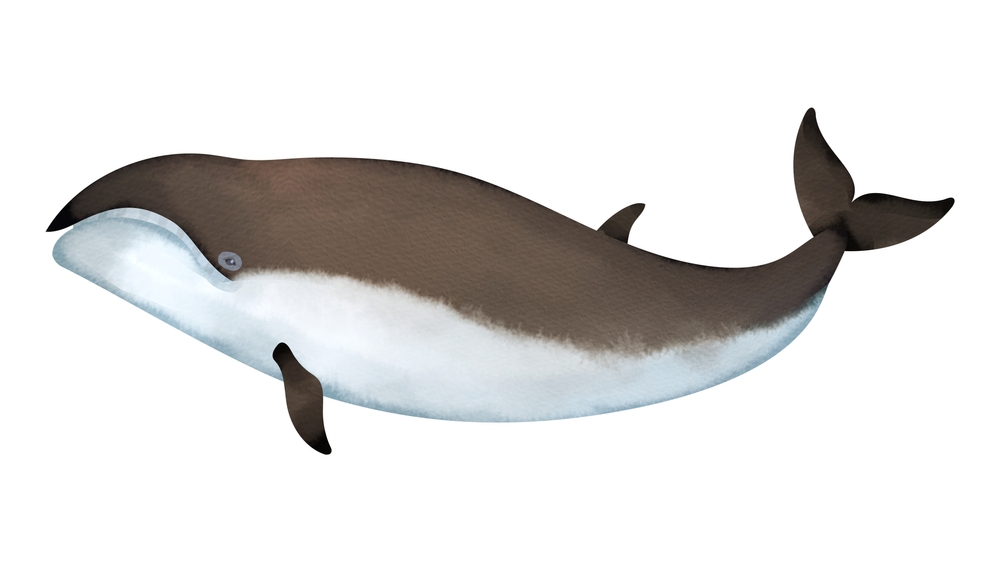The Pygmy Right Whale Was the Family Weirdo, and it Never Went Extinct
Posted on Categories Discover Magazine

The pygmy right whale looks like a miniature version of a baleen whale, hence the name “pygmy.” It’s the smallest of the filter-feeding whales, weighing in at just under 1,000 pounds. Rarely observed and shy by nature, it’s found in the temperate waters of the Southern Hemisphere.
The pygmy has long been called a right whale because people thought that it looked like one, but many researchers have long disputed this notion because of a number of differences. For example, the pygmy right whale is sleeker and has a dorsal fin, whereas the right whale does not. These differences and others have puzzled researchers for decades.
“The pygmy right whale has long captured the imagination of people because it’s a tiny version of a giant whale,” says Ludovic Dutoit, an evolutionary geneticist at the University of Otago in Dunedin, New Zealand.
Read More: 4 Ways Whales Show They Are Highly Intelligent Creatures
The Pygmy Right Whale is Not a Right Whale, After All
New research is showing that it’s more likely a member of a now-extinct group of whales. In a July 2023 study published in the journal Marine Mammal Science, Dutoit and a team of researchers sequenced the entire genome of a pygmy right whale using genomic DNA from the kidney tissue of a beached whale found in South Australia in 2017.
The data was mapped against the published genomes of two right whales, a gray whale, and five rorquals (the largest group of baleen whales that contains the blue whale). The data showed that pygmy right whales are most similar to rorquals, not right whales, though we’re still not sure from which family of whales they descend.
What’s fascinating is that it seems that the pygmy somehow survived when all of its relatives went extinct, and what’s more, says Felix Marx, co-author of the study and curator of marine mammals at the Museum of New Zealand Te Papa Tongarewa, “it’s been this way for a very long time, potentially 15-20 million years.”
Read More: A Pygmy Sperm Whale Finds A Gruesome Death From Killer Whales
Why Did the Pygmy Right Whale Survive?
We don’t know for sure why this miniature version of a massive creature pushed on when the other members of its species died out. But Marx says that we do have some clues. He points to the example of the Ganges river dolphin and the modern sperm whale, both of which are the only members of their lineage that isn’t extinct.
This might be the result of a member of the family doing something different than the others that allows it to survive, says Marx. In the case of the Ganges river dolphin, it was swimming in rivers while every other ocean-swimming member of its lineage was replaced with modern dolphins. The sperm whale survived because, unlike many other members of its family that died out, it’s a deep-diving predator.
The pygmy right whale, though smaller than the whales of today, is still quite large and would have been larger than the other members of its family that died out around the onset of an ice age. It also feeds differently. By skim feeding, it keeps swimming as prey accumulates in its baleen and then squeezes out the water. The bottom line, says Marx, “it’s the weirdos of the group that seem to have survived.”
Read More: 4 Ways Whales Show They are Highly Intelligent Creatures
Pygmy Right Whales Migration Patterns
Another study published in the July 2023 edition of Frontiers in Marine Science highlighted another reason why the pygmy right whale is a so-called weirdo. According to the study, pygmy right whales likely forgo long-distance migrations and instead live in the warm waters around Australia year-round.
Researchers used stable isotope values from 1980–2019 to infer the habitat of the elusive pygmy and found that they “remain year-round in mid-latitude waters, where they likely feed in upwelling regions between coastal waters off southern Australia and the subtropical convergence.” It’s unclear whether this would have allowed them to survive when others did not.
Now that researchers have finally confirmed that pygmy right whales aren’t right whales and are indeed a members of their own family, the next steps will be to look deeper into who this family was to get a better understanding of this curious whale’s ancient lineage.
Read More: The Rice’s Whale: How This New Whale Species Is Fighting for Survival